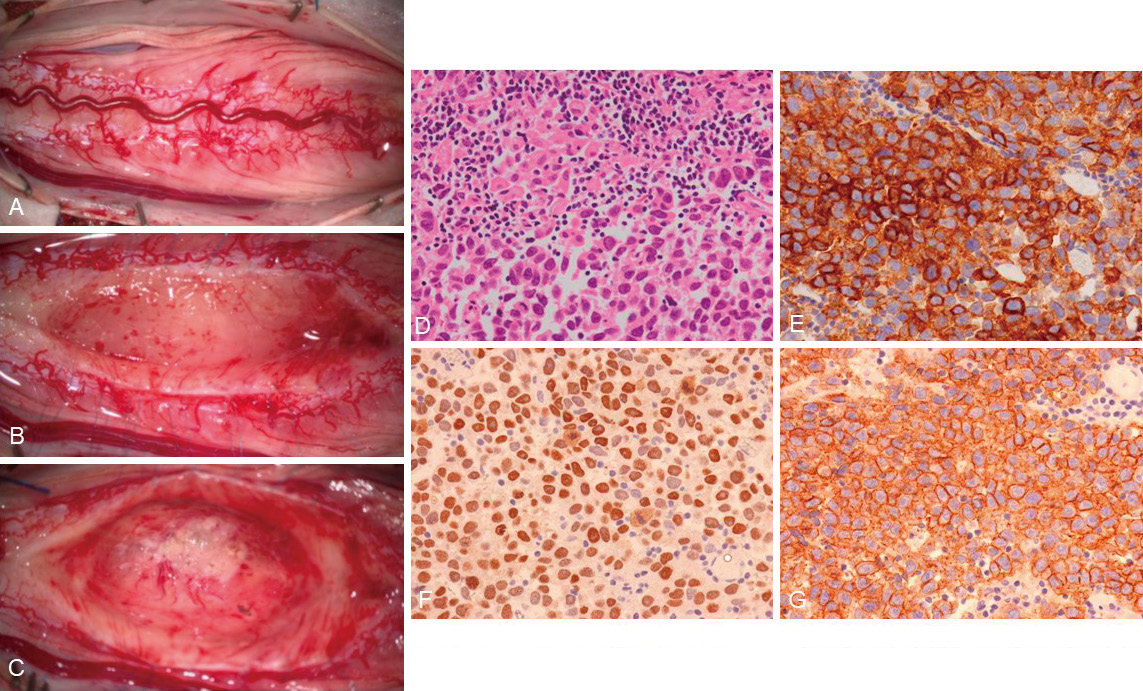- 著者
- Ryo Hiramatsu Ryokichi Yagi Masahiro Kameda Naosuke Nonoguchi Motomasa Furuse Shinji Kawabata Hiroyuki Ohnishi Shigeru Miyachi Masahiko Wanibuchi
- 出版者
- The Japanese Society for Neuroendovascular Therapy
- 雑誌
- Journal of Neuroendovascular Therapy (ISSN:18824072)
- 巻号頁・発行日
- pp.oa.2023-0027, (Released:2023-08-15)
- 参考文献数
- 25
Objective: This study aimed to report the outcome of an endovascular treatment with a pipeline embolization device (PED) at a single center. We also examined the predictive factors for an incomplete occlusion after the PED placement.Methods: The subjects were 94 patients with 109 aneurysms who underwent the PED placement at our single center from June 2015 to September 2022. As treatment outcomes, we investigated the PED placement success rate, perioperative morbidity and mortality, postoperative cranial nerve improvement rate, and the classification of angiographic result at 6 months after the PED placement. Furthermore, the predictors of an incomplete occlusion were investigated in detail.Results: One hundred nine aneurysms locations were: C1 (9), C2 (30), C3 (15), C4 (53), and C5 (2) in the internal carotid artery segments. Perioperative morbidity, including the asymptomatic ones, occurred in 10 cases (10.6%). Among these 10 cases, the modified Rankin Scale (mRS) improved to preoperative mRS after 90 days in 9 cases except 1 case. On the other hand, no perioperative mortality was observed. The postoperative cranial nerve improvement rate was 84.4%, and 61.7% of patients had a complete occlusion in the follow-up angiography, 6 months after the PED placement. Predictive factors for an incomplete occlusion after the PED placement were the elderly aged 70 years or older (P-value = 0.0214), the elderly aged 75 years or older (P-value = 0.0009), and the use of anticoagulants (P-value = 0.0388) in an univariate analysis. Further, the multivariate analysis revealed that the elderly aged 75 years or older was a predictive factor of an incomplete occlusion in this study.Conclusion: We summarized the outcomes of the PED treatment at our single center. In this study, the elderly aged 75 years or older was a predictive factor of an incomplete occlusion after the PED placement.
- 著者
- Madoka NAKAJIMA Shigeki YAMADA Masakazu MIYAJIMA Kazunari ISHII Nagato KURIYAMA Hiroaki KAZUI Hideki KANEMOTO Takashi SUEHIRO Kenji YOSHIYAMA Masahiro KAMEDA Yoshinaga KAJIMOTO Mitsuhito MASE Hisayuki MURAI Daisuke KITA Teruo KIMURA Naoyuki SAMEJIMA Takahiko TOKUDA Mitsunobu KAIJIMA Chihiro AKIBA Kaito KAWAMURA Masamichi ATSUCHI Yoshihumi HIRATA Mitsunori MATSUMAE Makoto SASAKI Fumio YAMASHITA Shigeki AOKI Ryusuke IRIE Hiroji MIYAKE Takeo KATO Etsuro MORI Masatsune ISHIKAWA Isao DATE Hajime ARAI The research committee of idiopathic normal pressure hydrocephalus
- 出版者
- The Japan Neurosurgical Society
- 雑誌
- Neurologia medico-chirurgica (ISSN:04708105)
- 巻号頁・発行日
- vol.61, no.2, pp.63-97, 2021 (Released:2021-02-15)
- 参考文献数
- 286
- 被引用文献数
- 88 211
Among the various disorders that manifest with gait disturbance, cognitive impairment, and urinary incontinence in the elderly population, idiopathic normal pressure hydrocephalus (iNPH) is becoming of great importance. The first edition of these guidelines for management of iNPH was published in 2004, and the second edition in 2012, to provide a series of timely, evidence-based recommendations related to iNPH. Since the last edition, clinical awareness of iNPH has risen dramatically, and clinical and basic research efforts on iNPH have increased significantly. This third edition of the guidelines was made to share these ideas with the international community and to promote international research on iNPH. The revision of the guidelines was undertaken by a multidisciplinary expert working group of the Japanese Society of Normal Pressure Hydrocephalus in conjunction with the Japanese Ministry of Health, Labour and Welfare research project. This revision proposes a new classification for NPH. The category of iNPH is clearly distinguished from NPH with congenital/developmental and acquired etiologies. Additionally, the essential role of disproportionately enlarged subarachnoid-space hydrocephalus (DESH) in the imaging diagnosis and decision for further management of iNPH is discussed in this edition. We created an algorithm for diagnosis and decision for shunt management. Diagnosis by biomarkers that distinguish prognosis has been also initiated. Therefore, diagnosis and treatment of iNPH have entered a new phase. We hope that this third edition of the guidelines will help patients, their families, and healthcare professionals involved in treating iNPH.
- 著者
- Takumi HOSHIMARU Fugen TAKAGI Yuichiro TSUJI Ryokichi YAGI Ryo HIRAMATSU Masahiro KAMEDA Naosuke NONOGUCHI Motomasa FURUSE Shinji KAWABATA Toshihiro TAKAMI Masahiko WANIBUCHI
- 出版者
- The Japan Neurosurgical Society
- 雑誌
- NMC Case Report Journal (ISSN:21884226)
- 巻号頁・発行日
- vol.10, pp.27-32, 2023-12-31 (Released:2023-02-23)
- 参考文献数
- 21
Primary germ cell tumors of the central nervous system (CNS) typically occur in the neurohypophysis, hypothalamus, or pineal gland and rarely in the spinal cord. We report a case of a spinal intramedullary tumor, which was first detected on magnetic resonance imaging (MRI) 41 months after the initial symptoms, with a verified pathological diagnosis of germinoma. The initial symptom was an abnormal sensation in the left plantar region that gradually worsened, resulting in severe sensory disturbance, difficulty in standing, and even bladder rectal disturbance. Repeated MRI after the onset failed to provide an imaging diagnosis. The MRI was performed 41 months after the onset and revealed a previously undiagnosed, contrast-enhancing spinal intramedullary neoplastic lesion at the Th11-12 level. Gross total resection of the tumor was successfully performed, and the pathology confirmed the diagnosis of pure germinoma. Postoperative chemotherapy, followed by local radiation, was successfully administered. Among primary germinomas of the CNS, occult germinoma that lacks imaging findings suggestive of tumors in the early stages of onset and becomes apparent over time is often reported as a primary neurohypophyseal germinoma, particularly in adolescents presenting with diabetes insipidus. In the present case, the lesion appeared to correspond to a primary occult germinoma of the intramedullary spinal cord.
